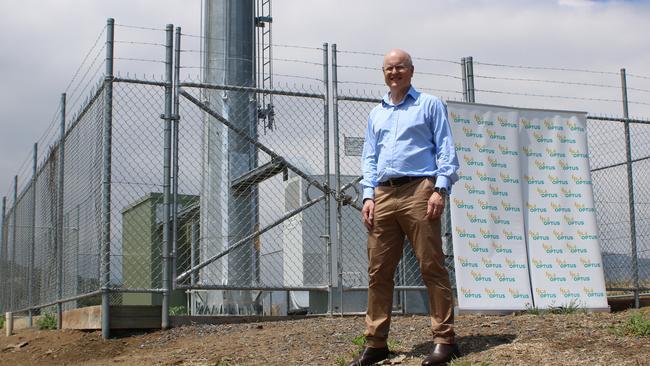Optus outage: Capacity and coverage limit emergency network sharing capability
Optus says that emergency mobile roaming which would have allowed the its customers to piggy back off of other networks is not yet feasible.

Business
Don't miss out on the headlines from Business. Followed categories will be added to My News.
Optus says emergency mobile roaming, which would have allowed its customers to piggy-back off other networks, probably would not have been a feasible solution for Wednesday’s nationwide outage, as the telco prepares for a critical meeting with the federal government on the issue.
The nation’s second-largest telco has told The Australian that roaming, which allows customers to stay connected via other telco networks in emergencies, is not yet at a level where it would be effective in a major network outage.
The issue will be raised at a major roundtable discussion between federal Communications Minister Michelle Rowland and Optus, TPG and Telstra later in November.
It is not clear whether Optus chief executive Kelly Bayer Rosmarin will attend, with the company refusing to detail who it will send.
The government and Australia’s major telcos have been discussing the viability of using each other’s networks during a crisis for the past few years.
A service called emergency camp-on is already available across the country, allowing a person to contact emergency services with another network if their own provider is not connecting. That service was available to Optus mobile customers on Wednesday.
Optus vice-president of government and regulatory affairs Andrew Sheridan told The Australian that emergency mobile roaming would not have connected all of the nation on Wednesday because of capacity restraints.
“There’s still a way to go around that technical capability and a number of practical issues to resolve and it’s not clear that type of tool would have assisted in this type of incident,” he said.
“The technical and practical things are around how you turn the service up and how you turn the service down. You’ve got to make sure that each network has capacity in a particular localised area for 100 per cent of the population in that area. There’s a number of things that really have to be worked through from a practical and commercial perspective.”
The emergency services meeting, set to take place on November 23, forms part of a review of the feasibility of emergency mobile roaming networks, with findings due to be delivered in March next year.
The Department of Infrastructure, Transport, Regional Development, Communications and the Arts and the National Emergency Management Agency are responsible for progressing talks and reviews on setting up EMR network capability.
An ACCC report found that infrastructure sharing can reduce costs to deploy new mobile sites that would be of public benefit and that grant programs would “outweigh possible competition concerns”.
It highlighted that “encouraging carriers to deploy mobile infrastructure in areas without a commercial incentive through current grant programs is a significant challenge”.
A Telstra spokeswoman said the telco supported emergency roaming that could be using natural disasters to allow communities and authorities to stay in touch.
“We announced last week we will be doing a simulation to test its feasibility and we are working with the industry and government on how it would work, when it could be turned on and how it would be funded,” she said.
“Emergency roaming during disasters is possible because it would be limited to a relatively small geographic area and with manageable customer numbers. Even so, capacity would need to be carefully managed and limited to ensure the surviving network did not fall over or suffer serious congestion.”
However, no Australian network was at a level where millions of customers could connect during an emergency.
“This arrangement would not be possible at a national or even state level as networks are not configured to take on millions of additional customers at one time – networks are dimensioned by all carriers to provide sufficient capacity to support demand from their own customers. No carrier can take on the full nationwide traffic of another carrier and any attempt to do so would put the surviving network at material risk,” she said.
A TPG spokesman said the telco was committed to working with industry to develop disaster roaming technology in regional areas.
“It is important we work with industry and government on the practical and technical feasibility of such a system,” he said.
More Coverage
Originally published as Optus outage: Capacity and coverage limit emergency network sharing capability





